I want to build my own little electrophoresis gizmo to play with.
I did pick up a small tube of powdered graphite and some liquid tape. With this, I should be able to make a waterproof electrically-conducting glue that I can use for the electrodes. I’ve got numerous old “wall-wart”-type power adapters that I ought to be able to use for power supply.
The main thing I’m trying to work out in my head before I start trying to actually put this together is exactly how I’m going to arrange it so that I can have either a thin gel or a piece of paper or other fibrous material in between the electrodes so that I can best separate things.
I suppose it’s kind of bizarre, but this is actually part of the ongoing Expired JellO® projects. I was wondering to myself what actual changes might possibly occur in a packet of dry gelatin mix over time, and how would I be able to tell? My previous experiments have shown no indication that there are any easily detectable differences (no obvious changes in taste or texture, no strange eerie glow, no acquisition of superpowers upon eating it…) so I’ll have to look more closely.
It occurred to me that just maybe over time the strands of protein that make up gelatin might get damaged by oxidation from the air in the pouch (or do they seal the pouch in a relatively inert gas, like argon or nitrogen?). This isn’t something one can really tell just by looking, obviously. One MIGHT be able to tell indirectly by making fresh and “expired” packets of gelatin with the same precisely-measured amount of water, poured on at the same precisely-measured temperature, and ideally with the same amount of mixing. Believe it or not, there are actually special scientific devices for measuring the firmness of gels like this. The hypothesis would be that expired gelatin might end up “degraded” into smaller strands of protein than a fresh packet, and that this would be reflected in a reduced firmness of the gel, or perhaps reduced water-holding capacity.
However, I don’t have access to precise devices for measuring things like that, and in any case since I suspect the difference would be pretty minimal, I’m not sure any difference in firmness would really be detectable with any kind of instrument I could cobble together on my own. What to do?…
I thought that if I had a way to subject a sample of dissolved gelatin to electrophoresis, I could then use a protein-staining substance to see how broad of a range of protein-fragment sizes were existent, or perhaps even spot distinct fragments if oxidative damage tended to happen at the juncture between particular amino acids or something.
I’m not quite sure why, but I have a strong desire to do this experiment from scratch as a “hillbilly biotech” exercise (including building the equipment and obtaining my supplies from grocery or hardware stores rather than specialty scientific supply places).
There are special protein staining compounds I can use at the end to see where my bits of protein ended up after electrophoresis. “Coomassie Brilliant Blue“, for example, but they don’t have that down at the grocery store. (And if you think that’s a funny name for a dye, consider “Light Green SF Yellowish”…)
Then, I ran into a post indirectly about henna over on scienceblogs.com. It seems the natural orange-staining ingredient in henna, called lawsone, may be specifically a protein-staining substance. I’m not certain about this, but a dark-orange protein-staining dye would work for my purposes I think. If so, that solves my need to get a protein stain from an ordinary store.
It’ll be a little while before I can try to put this plan into action, but I think I’ll be able to get to it in the next month or two.
In other news, I think I’ll try to post my “Microbial fuel cells in 90 seconds” audio sometime tomorrow. Then I can work on more. Anybody want to hear me attempting to explain something in 90 seconds? So far I’ve considered MRSA, and perhaps how cow flatulence threatens the world’s climate (which is also a microbiological topic). I’m sure there must be plenty of other possible topics. Any suggestions?
P.S. Who wants audio in Ogg Vorbis format in addition to mp3?

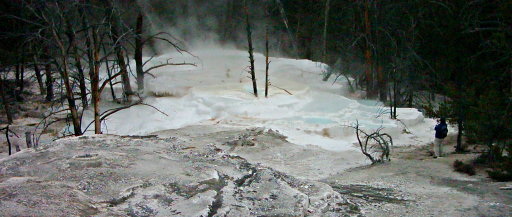
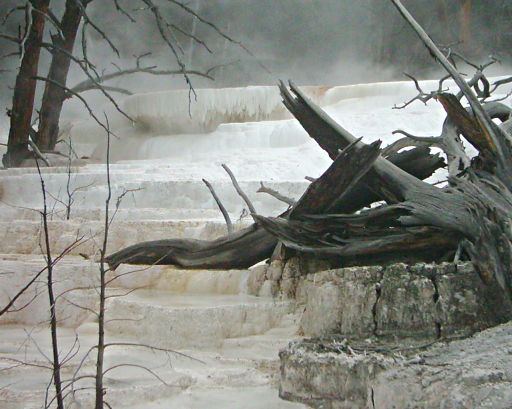
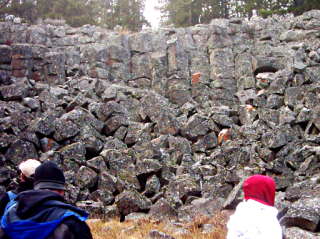
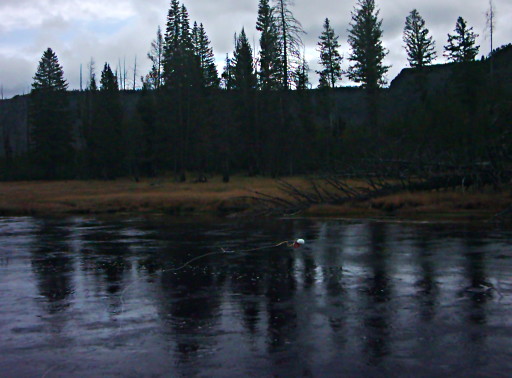
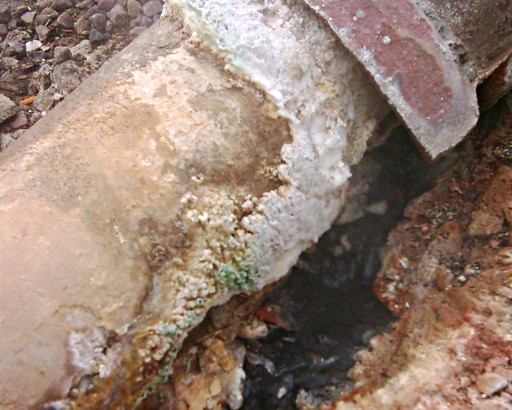
 Expired JellO®! Deadly Poison, or Merely Debilitating? Can a human being withstand the toxic load of an *entire box* of it? Would he suffer embarassingly loud and messy gastrointestinal distress, or would immediate organ failure set in before this could take place? STAY TUNED TO FIND OUT!…
Expired JellO®! Deadly Poison, or Merely Debilitating? Can a human being withstand the toxic load of an *entire box* of it? Would he suffer embarassingly loud and messy gastrointestinal distress, or would immediate organ failure set in before this could take place? STAY TUNED TO FIND OUT!…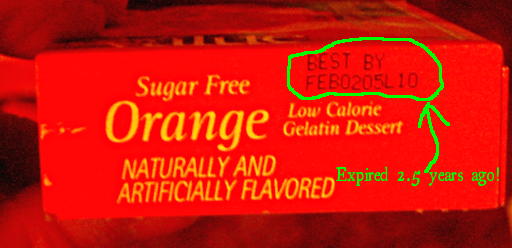
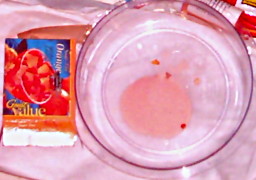 Last night, I plucked from the depths of my pantry an expired-2½-years-ago box of sugarless orange-flavored gelatin with which to begin this investigation. I blew the layer of dust off of the box, and carefully opened it, half-expecting to find some strange mutant gelatin-beast had developed in it over the years since expiration. One hand poised to protect myself should the creature leap from the box to eat my face in anger of being disturbed, I was both relieved and slightly disappointed to find nothing more than a foil packet containing what sounded like perfectly ordinary gelatin-powder. The packet proved to be intact, and the happy orange powder poured into a freshly-cleaned dish in a manner perfectly imitating that of wholesome non-expired gelatin. I dismissed the faint demonic snickering sound I seemed to hear as a figment of my fevered imagination and prepared the gelatin powder in the usual manner.
Last night, I plucked from the depths of my pantry an expired-2½-years-ago box of sugarless orange-flavored gelatin with which to begin this investigation. I blew the layer of dust off of the box, and carefully opened it, half-expecting to find some strange mutant gelatin-beast had developed in it over the years since expiration. One hand poised to protect myself should the creature leap from the box to eat my face in anger of being disturbed, I was both relieved and slightly disappointed to find nothing more than a foil packet containing what sounded like perfectly ordinary gelatin-powder. The packet proved to be intact, and the happy orange powder poured into a freshly-cleaned dish in a manner perfectly imitating that of wholesome non-expired gelatin. I dismissed the faint demonic snickering sound I seemed to hear as a figment of my fevered imagination and prepared the gelatin powder in the usual manner.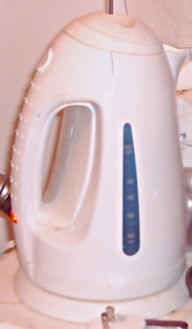 I took up my electric kettle, containing distilled water, and threw the switch. Seconds passed into minutes. Minutes passed into more minutes. Then, the water began boiling vigorously, and I applied one cup (8 fluid ounces) of this to the dish of powder, stirring it with a tablespoon. It seemed to take at least two minutes of continuous stirring, but the deceptively innocent-looking powder finally dissolved without the slightest scent of brimstone. As prescribed by the instructions on the box, I added a further 8 fluid ounces of cold water (from the tap of my kitchen sink), stirred briefly to mix, and placed the dish in the refrigerator to gel overnight.
I took up my electric kettle, containing distilled water, and threw the switch. Seconds passed into minutes. Minutes passed into more minutes. Then, the water began boiling vigorously, and I applied one cup (8 fluid ounces) of this to the dish of powder, stirring it with a tablespoon. It seemed to take at least two minutes of continuous stirring, but the deceptively innocent-looking powder finally dissolved without the slightest scent of brimstone. As prescribed by the instructions on the box, I added a further 8 fluid ounces of cold water (from the tap of my kitchen sink), stirred briefly to mix, and placed the dish in the refrigerator to gel overnight.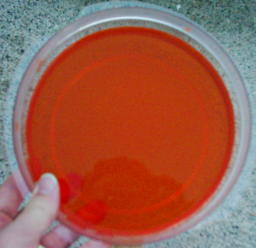 Day broke, and this very afternoon I took the now solidified mass from the refrigerator. This was it. My last chance to avoid whatever hellish abuses this disturbingly orange substance had planned for me. But no…it was far too late to turn back now. I took up my spoon, and devoured every last bit of happy orange jiggliness.
Day broke, and this very afternoon I took the now solidified mass from the refrigerator. This was it. My last chance to avoid whatever hellish abuses this disturbingly orange substance had planned for me. But no…it was far too late to turn back now. I took up my spoon, and devoured every last bit of happy orange jiggliness.